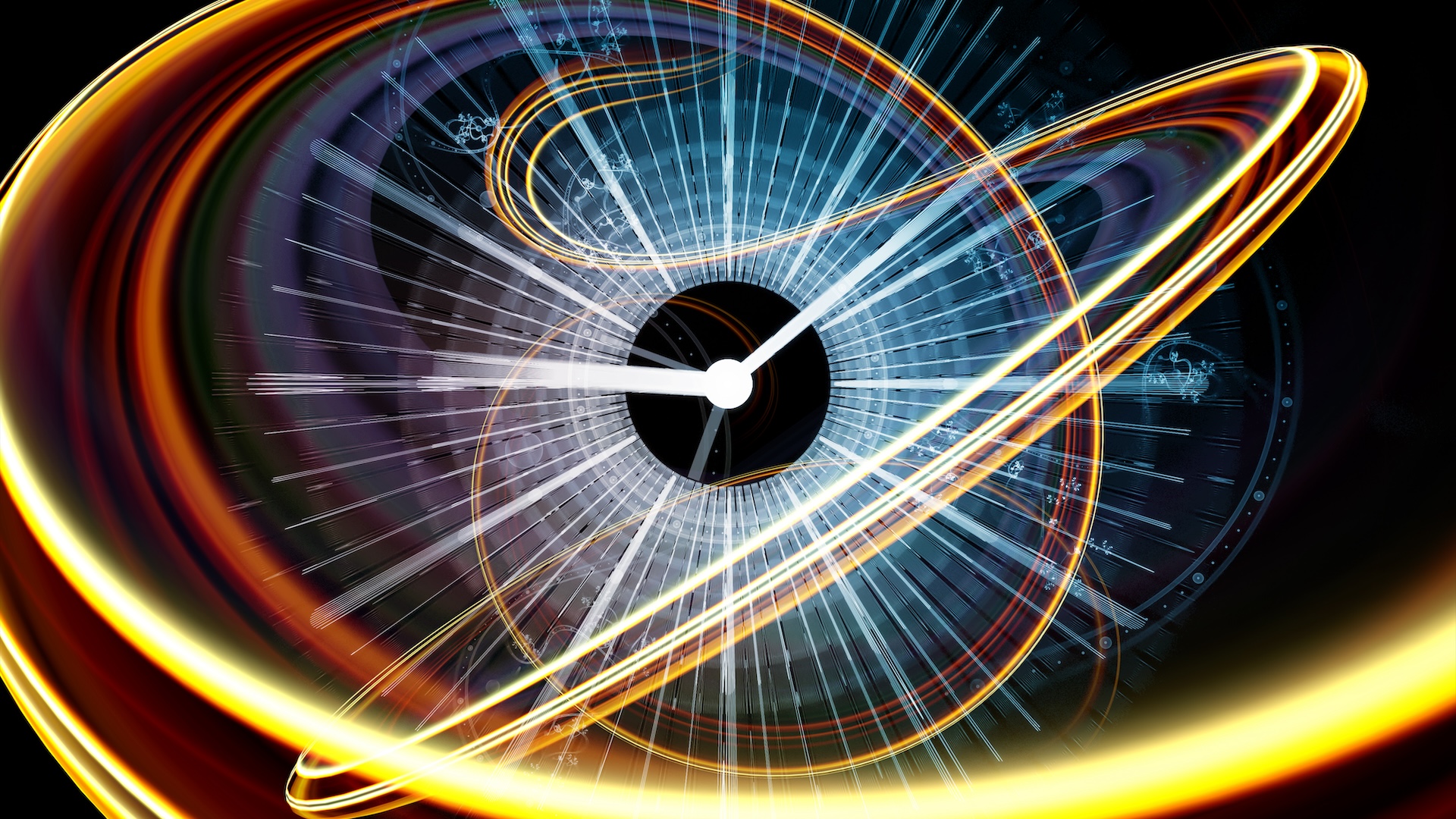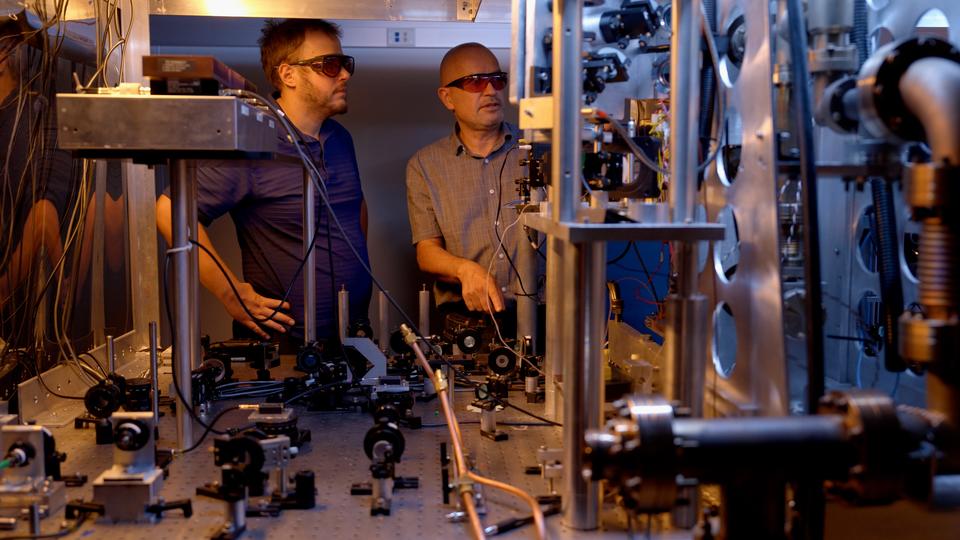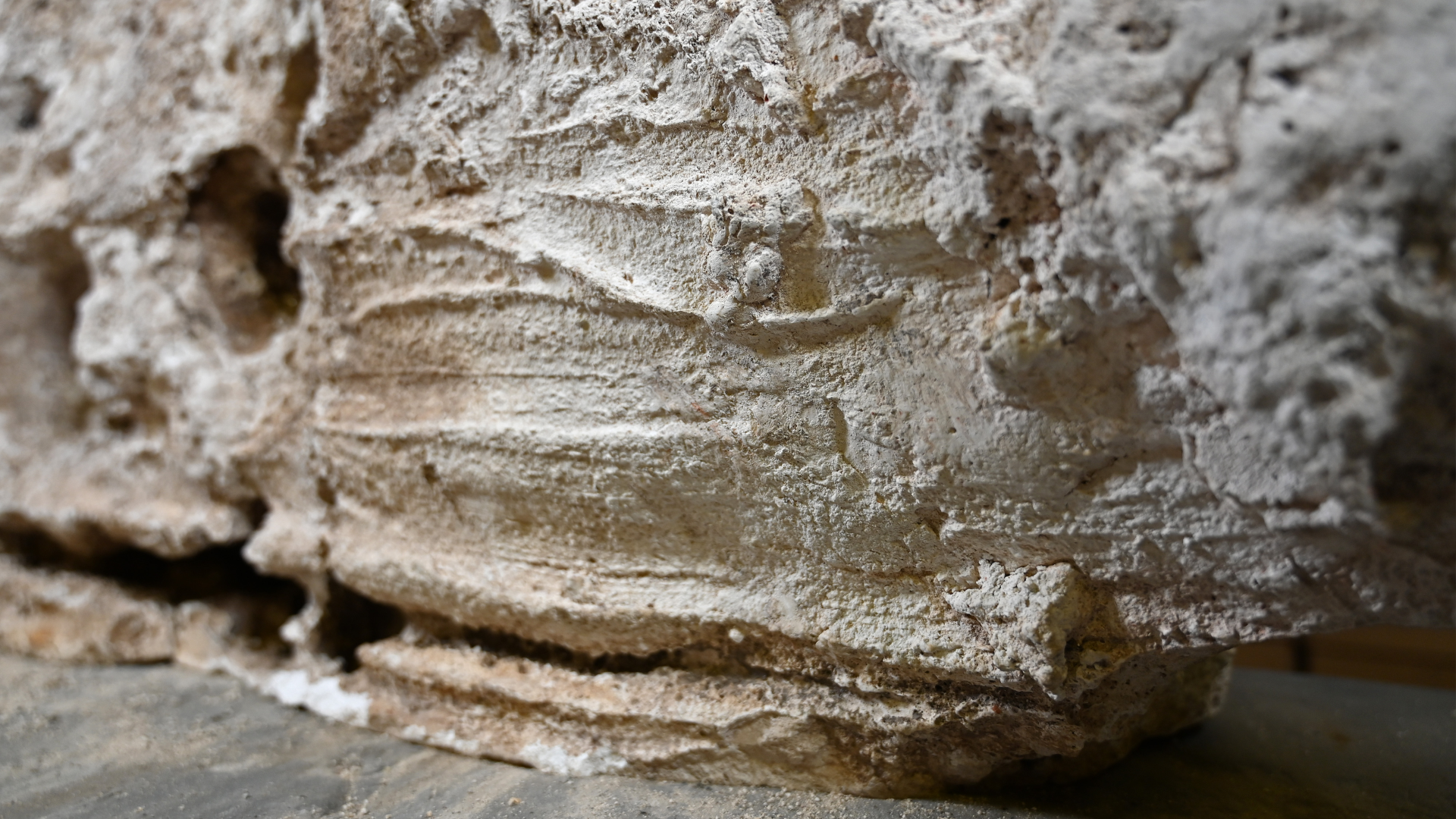Physicists create groundbreaking atomic clock that's off by less than 1 second every 100 million years
The National Institute of Standards and Technology's new cesium fountain clock is one of the most precise atomic clocks ever created.

Scientists have developed one of the most precise atomic clocks ever built, and they plan to use it as a reference clock to define time itself.
Based on the rising and falling of cesium atoms under a microwave beam, the NIST-F4 atomic clock is so reliable that if it had started to run when dinosaurs existed 100 million years ago it would be off by less than a second today, according to its creators.
The clockmakers, scientists at the National Institute of Standards and Technology (NIST) in Boulder, Colorado, published details of the NIST-F4's workings April 15 in the journal Metrologia. Running as of April 2025, the new clock is pending approval before it joins roughly 450 other clocks worldwide in defining Coordinated Universal Time (UTC), the global system for measuring the ultraprecise beat of a second.
Time signals are "used literally billions of times each day for everything from setting clocks and watches to ensuring the accurate time stamping of hundreds of billions of dollars of electronic financial transactions," Liz Donley, chief of the Time and Frequency Division at NIST, said in a statement. (Donley is not credited as one of the new paper's authors).
The growing need for more precise timekeeping means that scientists are always working to develop better reference clocks — ones that define the time others are set by. Unlike their everyday counterparts, these reference devices are atomic clocks, deriving their ticks from the vibrations of atoms.
NIST-F4 is a type of atomic clock known as a fountain clock, containing a cloud of thousands cesium atoms cooled to near absolute zero using lasers. The atoms are then thrown upwards under the impulse provided by a pair of laser beams, then fall under their own weight while passing through a microwave beam tuned to make the atoms oscillate.
Get the world’s most fascinating discoveries delivered straight to your inbox.
Counting this frequency (which occurs 9,192,631,770 times every second) enables scientists to precisely define the international second.

But that's the relatively simple part. To ensure NIST-F4's reliability, the scientists had to account for every source of miniscule noise that could affect the cesium atoms' vibrations. These include quantum cross-talk with other atoms; microwave leakage and lensing effects; and subtle distortions in the electromagnetic fields generated by the lasers.
The team began making these tweaks in 2020, four years after the agency's first fountain clock, NIST-F1, was decommissioned for restoration. This work included rebuilding the microwave cavity at the core of the clock from scratch.
"Evaluating a fountain clock like NIST-F4 is a slow process," first study author Vladislav Gerginov, a physicist at NIST who worked on the new design, said in the statement. "We have to be very conservative. We should know everything about it."
The result is a clock with a total a total systematic uncertainty of 2.2×10⁻¹⁶ — a precision that means it loses less than a second every 140 million years. This extremely subtle lag is the product of noise from the randomness inherent in quantum measurements, a factor the scientists say could be reduced with better oscillators and refined laser cooling.
NIST-F4 will tick alongside its precursor clock NIST-F3. The newer clock will operate around 90% of the time, and at least one of the clocks will run at any given time. Data from both will be periodically sent to BIPM to calibrate UTC, and keep the world ticking on beat.

Ben Turner is a U.K. based writer and editor at Live Science. He covers physics and astronomy, tech and climate change. He graduated from University College London with a degree in particle physics before training as a journalist. When he's not writing, Ben enjoys reading literature, playing the guitar and embarrassing himself with chess.
You must confirm your public display name before commenting
Please logout and then login again, you will then be prompted to enter your display name.


